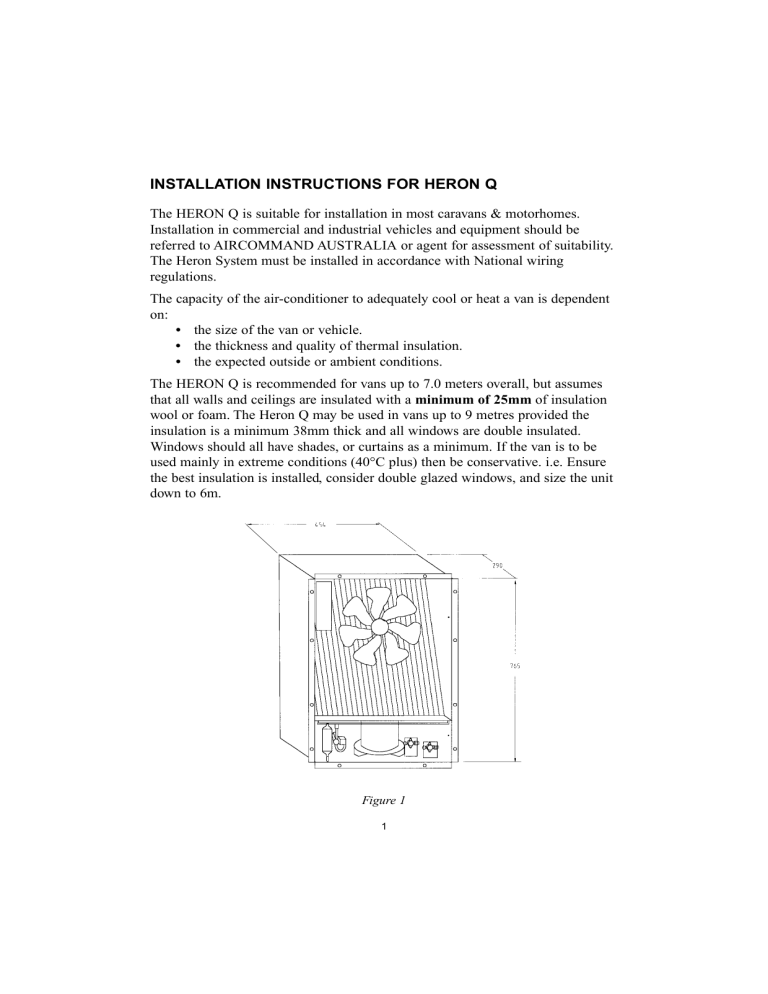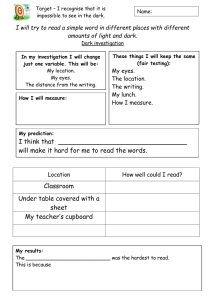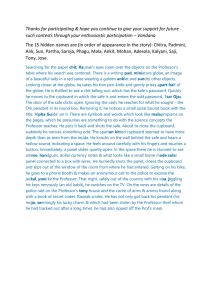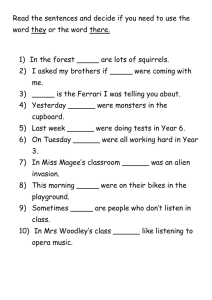INSTALLATION INSTRUCTIONS FOR HERON Q

INSTALLATION INSTRUCTIONS FOR HERON Q
The HERON Q is suitable for installation in most caravans & motorhomes.
Installation in commercial and industrial vehicles and equipment should be referred to AIRCOMMAND AUSTRALIA or agent for assessment of suitability.
The Heron System must be installed in accordance with National wiring regulations.
The capacity of the air-conditioner to adequately cool or heat a van is dependent on:
• the size of the van or vehicle.
• the thickness and quality of thermal insulation.
• the expected outside or ambient conditions.
The HERON Q is recommended for vans up to 7.0 meters overall, but assumes that all walls and ceilings are insulated with a minimum of 25mm of insulation wool or foam. The Heron Q may be used in vans up to 9 metres provided the insulation is a minimum 38mm thick and all windows are double insulated.
Windows should all have shades, or curtains as a minimum. If the van is to be used mainly in extreme conditions (40°C plus) then be conservative. i.e. Ensure the best insulation is installed, consider double glazed windows, and size the unit down to 6m.
Figure 1
1
DESCRIPTION OF THE HERON SYSTEM
The HERON Q is a “split system” utilizing a condenser set (referred to throughout this text as a Con/set) and an airhandler (referred to as an A/H). The
Con/set is designed for installation into a side wall of a van, and will fit beneath the bench top or into the back of a wardrobe etc. Ref. to fig. 1 for dimensions.
The A/H is designed for fitment into an overhead cupboard or similar, and comes complete with facia and controls. (See fig. 2)
12
270
490
Figure 2
The A/H and Con/set are coupled by means of a pair of refrigerant lines, a A/H power cable and a control cable assembly. The pipework is not supplied with the unit but a standard 5m power and control cable is.
Before proceeding with an installation consider a number of important details that must be complied with in the following description.
2
INSTALLATION OF THE CONDENSER SET
The Con/set may be sited through any side wall of a van. The hole size for installation is 454 wide x 765 high, and may be located under a bench top, or in a wardrobe etc.
This unit should be sited as near as possible to the A/H to minimize the length of refrigeration pipework. NB.
A maximum of 5m of pipework is allowable. Runs of up to 10m are possible, but would require additional refrigerant added to the system.
Generally, the Con/set is not installed on the near side, as if an awning is installed, the area would have hot condenser air discharged into it.
Note: The Con/set normally sits on the floor, but may also be sat atop the wheelarch, providing the entire base of the unit is supported.
Cut the opening for the Con/set, measuring 765mm high off floor level, and 454mm wide.
Retaining screw holes
Figure 3
Caution: This opening may interfere with wiring concealed in the wall cavity
(both 12v and 240v). If the wiring layout is not known, then proceed with caution.
Do not have the van plugged into a 240v supply during this stage of the installation.
The opening must now be framed with timber at least 25mm thick.
The Con/set can now be lifted into the opening. Before pushing in fully, run a generous bead of silicone around the back of the flanges (sides and top).
Push in firmly and fix in position by screwing back into the framing timbers.
(See fig. 3) 4 screws x no 8 required.
Now seal along the bottom edge.
Power Supply
The unit is designed to plug into a normal mains supply. This plug must be accessible after insulation. If a new outlet is installed, then it must be positioned near the con/set and easily accessible.
NOTE: The supply cord is designated Type Y. If replacement is necessary it should be replaced by an Aircommand approved technician.
3
PIPE INSTALLATION & CONTROL WIRING
(See also Tips on Flaring, page 11)
All pipe work must be clean and dry refrigeration grade annealed copper tube.
The pipe work consists of a 6.4mm dia. tube (liquid line), and a 9.5mm dia. tube
(return gas) running between the Con/set and the A/H.
These tube sizes are equivalent to 1/4” and 3/8” respectively.
The 9.5 dia. must be insulated with 10 x 10 foam rubber insulation.
Entry to the Con/set (Refer figures x, y & z). Retain the red plastic blanking caps on the pipes before flaring. These can be reinserted after the pipework is tightened up. It is essential that a good airseal is made here. Failure to do so will result in hot air being possibly leaked into the conditioned space.
The control cable and A/H power cable are passed out with the 6.4 dia. pipe, and usually runs to the A/H taped to the pipe.
Now refer to the A/H installation, after which we will return to the Con/set to open up the refrigeration circuit, and fit the exterior louvre panel.
DETAILS FOR RH, LH & REAR PIPE ENTRY
RIGHT HAND ENTRY
Figure X
Cut out hole in blanking caps and fit to form a seal
6.4ø tube
Pass power and control cables out with this tube
9.5ø tube with insulation
4
LEFT HAND ENTRY
Figure Y
Power & control cables can follow the 6.4ø pipe
9.5ø tube insulated
6.4ø tube
Ensure tubes do not touch compressor
REAR ENTRY
Figure Z
5
6.4ø tube pass out the power
& control cables thru this entry
9.5ø tube insulated
AIR HANDLER INSTALLATION
If possible, the A/H should be installed at either end of the van, such that unimpeded air flow is obtained down the length of the van.
If this is not possible, install the A/H in as central a position as possible.
5 MOST IMPORTANT POINTS THAT MUST BE SATISFIED
1.
The distance from the back of the cupboard to the back of the A/H must not be less than 90mm to allow proper air entry to the fan. Insufficient gap will also increase the noise level.
2.
Three separate return air grilles/filters are supplied, and must be installed. If only two are used, this will reduce the air volume back to the fan and hence the capacity of the airconditioner.
3.
The airhandler must be fitted allowing a minimum space of 25mm between the right hand side of the
A/H and the wall. And likewise 25mm between the top of the A/H and the inside top of cupboard.
4.
The return air grilles/filters, should be fitted as far back as is possible to provide a more direct path for air to flow back to the fan.
5.
The A/H has a condensate drain underneath. This drain must continuously “fall” from the outlet. It is recommended that the bottom of the A/H be 70mm above the bottom of the cupboard, to allow adequate fall.
A lesser amount is ok, provided much care is exercised to avoid “humps” that will result in airlocks and backup & overflow of condensate.
The airhandler has been designed to operate in a cupboard or enclosure as described on page 5.
Under no circumstances is the resistance to airflow to be increased by ducting of the supply or return air.
It is recommended that the minimum cupboard dimensions be 525 wide x 320 high x 300 deep.
455
338
Figure 6a
Figure 6
Mark out the A/H cut out as per fig. 6a.
Ensure the choice of location satisfies the following:
A. The Facia panel will be centrally located.
B. The right hand edge of the cutout will ensure that when the A/H is installed, a minimum space of 25mm exists down the side of the A/H.
C. The left hand side of the A/H must be a minimum of 110mm from the LHS of the cupboard to allow pipes to be connected. (Refer fig. 6)
D. The bottom of the cutout should be at least 70mm above the bottom of cupboard to allow the condensate drain to “fall” away sufficiently.
6
Fitting of the 3 return air grilles/filters
Provided the cupboard is 540mm wide or more, the three grilles can be installed side by side in the underside of the cupboard. (Refer fig. 7)
In the case of pop top vans, it may be convenient to install one of the three through the top.
Make sure however, that all three are installed.
Place the grilles as far back as is possible to allow the most direct route of the air to the fan inlet.
Cut out size for each grille is 158 x 232.
The following describes the procedure for both a cupboard with a removable front, and a cupboard with a front that is not easily disassembled.
Typically the latter type will have 4 to 5mm ply which will need reinforcing around the perimeter of the cutout and tying to the main structural members of the cupboard assy.
Make out the cut out as per fig 6a.
Drill holes at the corners of the cutout to allow a jig saw to cut out the entire cutaway.
It is important to cut the hole out accurately.
If the front panel is a solid 19mm panel, the
A/H will not need additional support. If however the front panel is light ply, then this must be strengthened after cutting out as per the template. This framing should be 20mm thick to provide the necessary support, and should tie in with the main cupboard members, to support the weight of the
Airhandler.
The front panel can now be fitted and screwed into place.
Installation of the refrigeration pipe work and condensate drain
The 9.4mm Ø and the 6.4 Ø pipes can enter either side of the cupboard, and be carefully manipulated to make the connection to the
Airhandler. The 9.4 Ø pipe must be insulated entirely.
The condensate drain is normally run vertically.
12mm hose or poly pipe is preferred. An elbow is provided in the installation kit to change direction from the vertical run to the horizontal to connect the airhandler. Failure to use this elbow usually results in a hump in the drain which may impede drainage, or a kink.
7
RETURN AIR GRILLES X 3
Figure 7
DRAIN ELBOW
DRAIN HOSE FALLS AWAY CONTINUOUSLY
Figure 8
AIR HANDLER
Back of Cupboard
90 Min.
Drain Connection
Return Air Grille (3 off)
Front of Cupboard
Figure 9
Now Install the Air Handler (refer fig. 7 - 13)
Insert the A/H into the front panel, and shift to the right as far as possible
Now insert a screw to hold the A/H in place while the copper tubes are manipulated to line up with the respective nipples.
Mark any excess tube to be cut off, and remove the A/H to allow the flare nuts to be put on and the flares made. Unscrew both flare nuts from the nipples of the A/H, ensuring the sealing caps are removed.
See page 6 for tips on making flares.
Having completed the flaring, reinstall the A/H, remembering to shift it fully to the right after insertion.
Screw the flanges back to the front panel through the 4 holes provided. Couple the flare nut connections and do up firmly.
8
9
10
11
12
13
14
15
16
17




